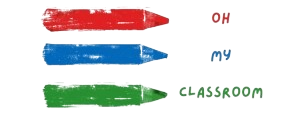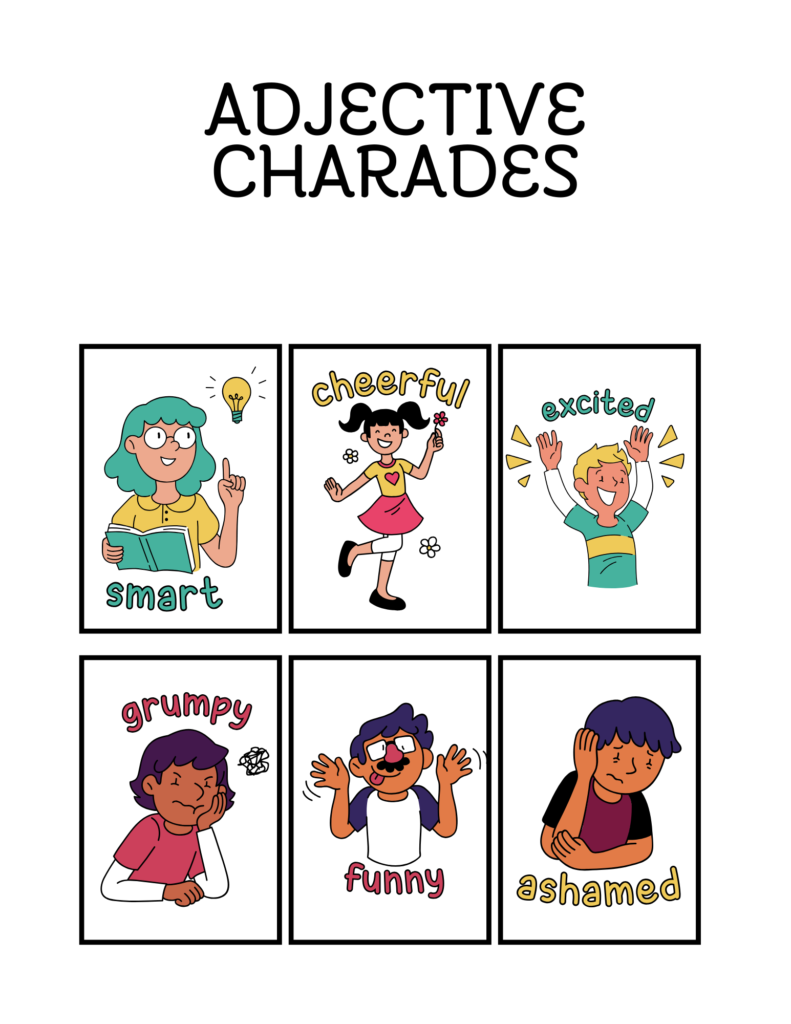Looking for engaging and hassle-free ways to help kids connect and get to know each other better?
We’ve curated a list of exciting no prep get to know you games for kids that are sure to bring laughter, excitement, and friendship into any setting.
These games require no advance preparation, making them perfect for spontaneous play dates, classroom icebreakers, or group activities.
From active games that get kids moving to creative challenges that spark their imaginations, there’s something for everyone.
“Two Truths and a Lie:”
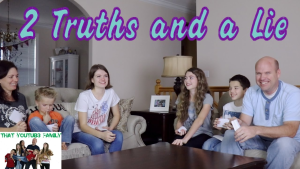
Two Truths and a Lie is a classic icebreaker game that never fails to get kids laughing and guessing. In this game, each child takes turns sharing three statements about themselves, two of which are true, and one that is a lie. The other participants have to guess which statement is a lie. Not only does this game encourage children to share interesting facts about themselves, but it also promotes active listening and critical thinking as they try to identify the fib. As the game unfolds, kids learn surprising and fascinating things about their peers, sparking conversations and building connections in a lighthearted and enjoyable way.
“Charades:”
Charades is a classic game that is easy to learn and play. Simply draw a card and, without speaking, act out the verb or adjective represented on the card, while others try to guess what it is. This game not only encourages creativity and nonverbal communication but also prompts discussions about emotions and how they can be expressed. Through the shared experience of acting, kids uncover commonalities and gain insights into each other’s personalities, fostering connections and empathy.
“Human Knot:”
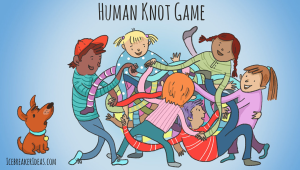
The Human Knot is a fantastic team-building game that challenges kids to work together and problem-solve as a group. Have the children stand in a circle and reach out their hands to grab the hands of two different people across from them. The objective is for the group to untangle themselves without letting go of each other’s hands. This game promotes communication, cooperation, and patience as kids navigate the physical puzzle. As they work together to find solutions, they learn about each other’s problem-solving styles and build trust, strengthening their connections and fostering a sense of camaraderie.
Related: 20 Happy Letter H Activities for Preschool
“Name That Hobby:”
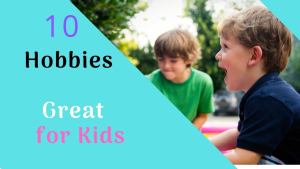
Name That Hobby is a game that allows children to share their interests while encouraging active listening and observation skills. Have the kids sit in a circle, and one child starts by whispering about their favorite hobby or activity to the person next to them. That person then whispers the hobby to the next person, and so on, until it reaches the last person in the circle. The last person announces the hobby they heard, and the original child confirms if it’s correct or not. This game not only sparks curiosity about different hobbies but also highlights the importance of attentive listening. It helps kids discover shared interests, initiate conversations, and appreciate the diverse passions within the group.
“Would You Rather:”
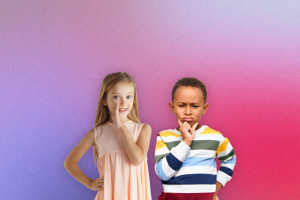
Would You Rather is a thought-provoking game that prompts kids to make choices between two options and explain their reasoning. Gather a list of age-appropriate “Would You Rather” questions, such as “Would you rather have super strength or the ability to fly?” or “Would you rather live in a treehouse or a submarine?” Each child takes turns answering the questions and sharing the reasoning behind their choices. This game encourages self-expression, critical thinking, and respectful discussions as kids explore their preferences and discover commonalities or differences in their choices. It’s an excellent opportunity for kids to learn more about each other’s personalities, values, and perspectives, fostering connections and understanding.
Related: 20 Amazing Letter G Activities for Preschool
“Scavenger Hunt Snapshots:”

In this game, divide the kids into pairs or small teams and give each team a smartphone or camera. Provide them with a list of items or scenarios to capture through photographs within a set time limit. The items can range from finding something green to taking a picture of someone doing a silly dance. This game encourages teamwork, creativity, and observation skills as kids work together to capture the snapshots. Once the time is up, gather the teams and have them share their photos, explaining the stories behind each image. It’s a fantastic way for kids to learn more about each other’s perspectives and experiences while having a blast.
“Emoji Storytelling:”
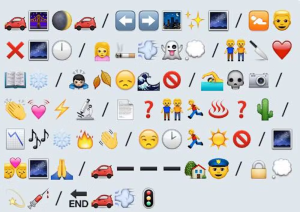
Unleash the power of imagination with Emoji Storytelling! Start by selecting a series of emojis that represent a specific scenario or event. Display the emojis one at a time, and have the kids take turns creating a story based on the emojis shown. The story can be silly, adventurous, or even mysterious, depending on the emojis chosen. This game encourages creativity, storytelling skills, and collaboration as kids build upon each other’s ideas and create a narrative together. It’s a fantastic opportunity for them to express themselves, discover shared interests, and strengthen their connections through the joy of storytelling.
“Would You Rather Freeze Dance:”
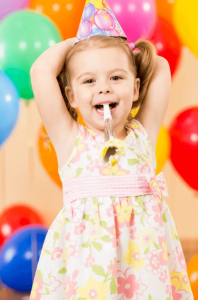
Put a musical twist on the classic “Would You Rather” game with Freeze Dance! Start by playing upbeat music and have the kids dance freely. Suddenly, pause the music and present them with a “Would You Rather” question, such as “Would you rather pretend to be a robot or a dinosaur?” The kids must freeze in their dance pose that represents their choice. After a few seconds, resume the music, and let the dancing continue. This game promotes quick decision-making, creativity, and self-expression. It also encourages kids to observe and appreciate each other’s unique dance moves and choices, fostering connections through shared laughter and enjoyment.
“Guess Who I Am:”
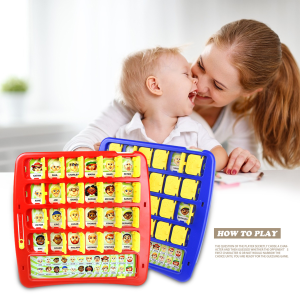
Guess Who I Am is a fun game that allows kids to take on the persona of a famous person, fictional character, or even an animal. Each child secretly chooses a character or object and provides clues to help others guess their identity. The clues can be shared through verbal descriptions or gestures. The other kids take turns asking yes or no questions to narrow down the options until they can guess correctly. This game promotes critical thinking, deductive reasoning, and creative problem-solving. It also gives kids an opportunity to share their interests and knowledge about different characters, sparking conversations and connections.
“Paper Plate Portraits:”
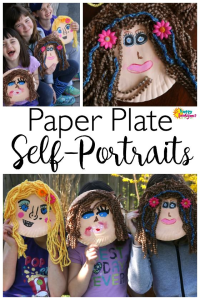
Paper Plate Portraits is a creative and artistic game that encourages kids to express themselves visually. Give each child a paper plate and a set of markers, crayons, or colored pencils. Instruct them to draw a self-portrait on the plate, incorporating their favorite things, hobbies, or unique characteristics. Once everyone has completed their portraits, have the kids take turns presenting their creations and explaining the story behind their drawings. This game fosters self-expression, observation skills, and appreciation for each other’s individuality. It’s a wonderful opportunity for kids to learn more about their peers’ interests, passions, and personal narratives, building connections through shared artistry.
“Alphabet Adventures:”
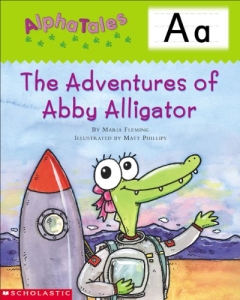
Embark on a thrilling Alphabet Adventure where each child takes turns coming up with a word related to a specific theme that starts with the next letter of the alphabet. For example, if the theme is animals, the first child might say “Alligator,” and the next child has to come up with a word starting with the letter “B,” such as “Bear.” This game encourages quick thinking, vocabulary expansion, and creativity. It also provides an opportunity for kids to share their knowledge and interests in different subjects, sparking conversations and connections as they explore the alphabet together.
“Emoji Puzzle Relay:”

Divide the kids into teams and create a relay race with a twist by using emoji puzzles. Prepare a series of emoji puzzles, which represent common phrases or sayings, and display them one at a time. The first player of each team has to decipher the meaning of the emoji puzzle and run to their teammates to share the answer. Once the team agrees on the correct phrase, the next player in line takes their turn. This game promotes teamwork, problem-solving, and quick communication skills. It also encourages kids to work together, brainstorm ideas, and celebrate their collective achievements.
“Memory Mingle:”

Memory Mingle is a memory-based game with a twist of interaction. Have the kids form a circle and start with one child saying their name along with an associated action, such as clapping their hands. The next child repeats the previous child’s name and action and adds their own. Each child in the circle has to remember and repeat the names and actions of all the previous participants before adding their own. This game challenges memory skills, active listening, and attention to detail. It also creates a sense of camaraderie and strengthens connections as kids cheer each other on and celebrate their collective memory prowess.
“Common Thread:”
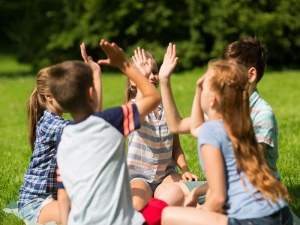
Common Thread is a game that encourages kids to find connections and similarities among themselves. Have the children sit in a circle, and one child starts by sharing a statement about themselves, such as “I have a pet dog.” If any other child can relate to that statement, they stand up and say, “I can relate!” and provide a brief explanation. This process continues as kids share various statements, finding common threads that bind them together. This game promotes active listening, empathy, and the discovery of shared experiences and interests. It fosters connections and a sense of belonging as children realize they are not alone in their experiences.
“Dance Party Mixer:”

Get the kids moving and grooving with a Dance Party Mixer! Start by playing upbeat music and instruct the children to dance freely. When the music stops, call out a category, such as favorite color, favorite animal, or a favorite hobby. The kids have to quickly find a partner who shares the same answer and dance together until the music starts again. This game encourages active engagement, and quick decision-making, and promotes conversations about shared interests. It creates a dynamic and energetic environment where kids can connect through movement, laughter, and discovering commonalities.
“Categories Countdown”:
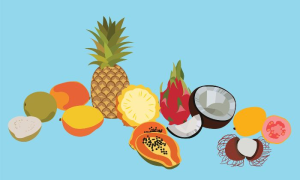
Test the kids’ quick thinking and creativity with Categories Countdown. Choose a category, such as animals, food, or sports. The first child starts by naming something within that category, and then the next child has to come up with something that starts with the last letter of the previous answer. For example, if the category is animals, one child may say “elephant,” and the next child has to come up with an animal that starts with the letter “t,” such as “tiger.” This game promotes vocabulary, quick thinking, and memory recall. It also encourages kids to explore different categories and appreciate the breadth of their knowledge.
“Team Trivia Challenge”:
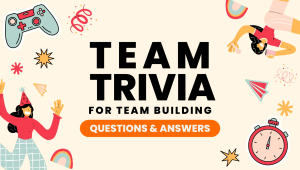
Divide the kids into teams and engage in a fun-filled Team Trivia Challenge. Prepare a list of trivia questions covering various topics, such as history, science, sports, or pop culture. Ask the questions one by one, giving each team a chance to answer. Award points for correct answers, and keep score to determine the winning team. This game not only tests knowledge but also promotes teamwork, collaboration, and healthy competition. It sparks conversations, encourages kids to share their insights, and strengthens connections as they work together towards a common goal.
“Would You Rather Relay”:
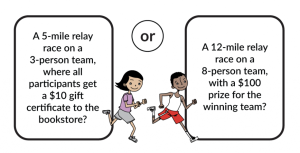
Combine the popular “Would You Rather” game with a relay race format. Set up two lines of cones or markers, and have the kids stand in two lines behind each set of markers. Start by presenting a “Would You Rather” scenario, such as “Would you rather swim with dolphins or ride a roller coaster?” One child from each team has to run to the opposite end, touch the marker, and go back to their team to indicate their choice. This game promotes decision-making skills, physical activity, and team spirit. It also sparks conversations as kids discuss their choices and the reasons behind them, fostering connections and understanding.
“Partner Interview”:

Pair up the kids and have them conduct a Partner Interview. Each child takes turns interviewing their partner, asking questions about their favorite hobbies, interests, or memorable experiences. After the interview, they switch roles, and the other child becomes the interviewer. This game promotes active listening, communication skills, and empathy. It provides an opportunity for kids to learn more about each other, discover shared interests, and build connections through genuine conversations. It encourages curiosity and respect for each other’s stories and experiences.
“Invention Convention”:
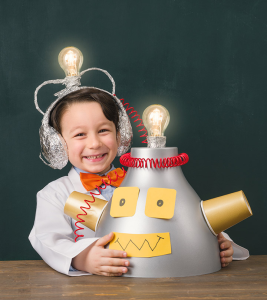
Unleash the kids’ creativity with an Invention Convention. Give each child a few minutes to come up with an imaginative invention on the spot. They can create something practical, whimsical, or futuristic. Once everyone has their invention, have them take turns presenting their ideas, explaining how their invention works and why it would be beneficial. This game encourages critical thinking, storytelling skills, and imaginative exploration. It also allows kids to showcase their unique perspectives, share their creativity, and appreciate the innovative ideas of their peers. It sparks conversations, laughter, and a sense of awe for each other’s inventiveness.
